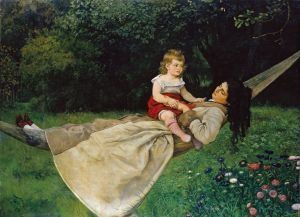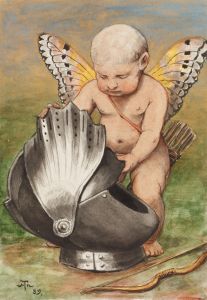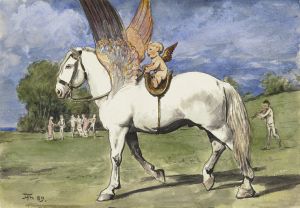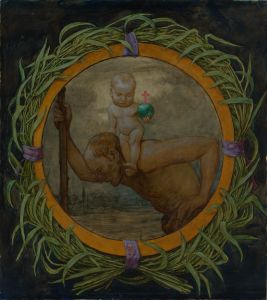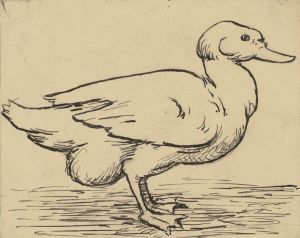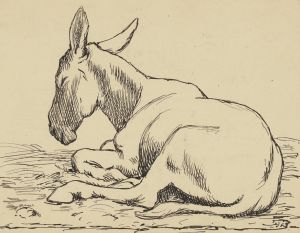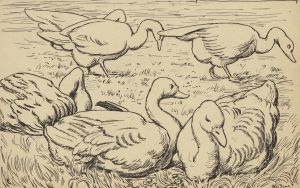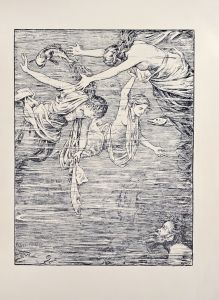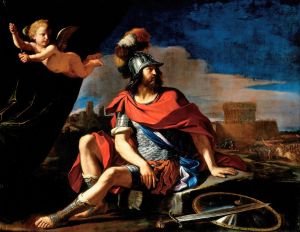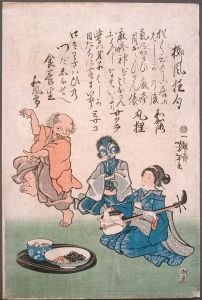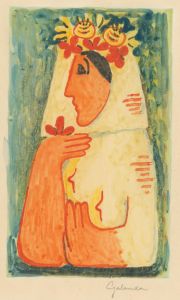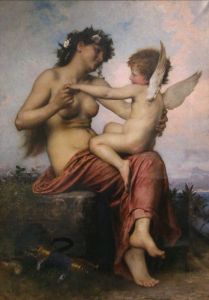
Dancing putta with a garland of roses
A hand-painted replica of Hans Thoma’s masterpiece Dancing putta with a garland of roses, meticulously crafted by professional artists to capture the true essence of the original. Each piece is created with museum-quality canvas and rare mineral pigments, carefully painted by experienced artists with delicate brushstrokes and rich, layered colors to perfectly recreate the texture of the original artwork. Unlike machine-printed reproductions, this hand-painted version brings the painting to life, infused with the artist’s emotions and skill in every stroke. Whether for personal collection or home decoration, it instantly elevates the artistic atmosphere of any space.
Hans Thoma was a notable German painter born on October 2, 1839, in Bernau, in the Black Forest region. He is recognized for his contributions to the German art scene during the late 19th and early 20th centuries. Thoma's work often reflects a blend of realism and romanticism, with a focus on landscapes, portraits, and mythological themes.
"Dancing Putto with a Garland of Roses" is one of Thoma's works that exemplifies his interest in mythological and allegorical subjects. The term "putto" refers to a figure of a chubby male child, often depicted nude and sometimes with wings, which is a common motif in Renaissance and Baroque art. Putti are typically associated with themes of love, playfulness, and innocence, and they often appear in artworks that explore these themes.
In "Dancing Putto with a Garland of Roses," Thoma captures the playful and joyous nature of the putto. The garland of roses adds an element of beauty and symbolism to the piece, as roses are often associated with love and beauty. This work reflects Thoma's ability to blend classical themes with his own artistic style, creating a piece that is both traditional and uniquely his own.
Thoma's artistic career began with his studies at the Karlsruhe Academy of Fine Arts, where he was influenced by the works of the Old Masters. His early work was characterized by a focus on detailed landscapes and portraits. Over time, Thoma developed a more personal style that incorporated elements of symbolism and allegory, as seen in "Dancing Putto with a Garland of Roses."
Throughout his career, Thoma was associated with several artistic movements, including the Munich Secession, which was part of a broader trend in Europe where artists sought to break away from traditional academic art and explore new styles and techniques. Thoma's work was well-received in Germany, and he gained a reputation as a leading figure in the country's art scene.
In addition to his paintings, Thoma also worked as a printmaker and illustrator. His versatility as an artist allowed him to explore a wide range of subjects and styles, from detailed landscapes to imaginative mythological scenes. Thoma's work is characterized by its attention to detail, vibrant colors, and a sense of harmony and balance.
Hans Thoma's legacy as an artist is marked by his ability to capture the beauty and complexity of the world around him. His works continue to be celebrated for their technical skill and emotional depth. "Dancing Putto with a Garland of Roses" is a testament to Thoma's talent for blending classical themes with his own unique artistic vision, creating works that resonate with viewers both in his time and today.
Thoma passed away on November 7, 1924, in Karlsruhe, Germany. His contributions to the art world are remembered through his numerous paintings and prints, which continue to be studied and appreciated by art enthusiasts and scholars alike.





